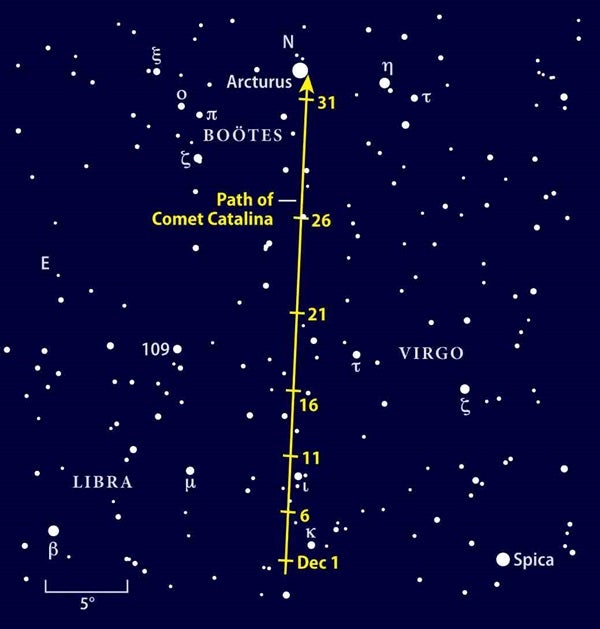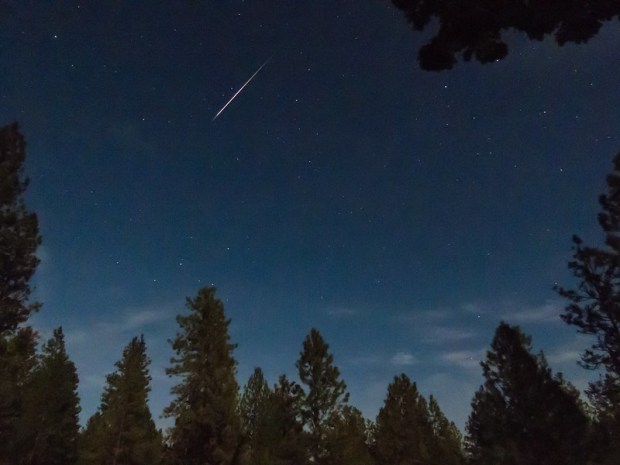The comet lies in eastern Virgo, a region that rises shortly after 3 a.m. local time and climbs some 30° high in the southeast by the time twilight begins. On the morning of December 12, Catalina stands 2° due north of 4th-magnitude Iota (ι) Virginis.
For the next week or so, Moon-free skies will let observers get detailed views of the comet’s dust and gas tails. From our perspective, the two tails appear distinct.
Although the comet’s surface remains hidden by a veil of dust, the surrounding coma may show a greenish hue.
The Moon returns to the morning sky in late December as Catalina sets its sights on brilliant Arcturus. It will then continue to climb northward for the next few weeks and will pass within 1° of Arcturus in early January.










